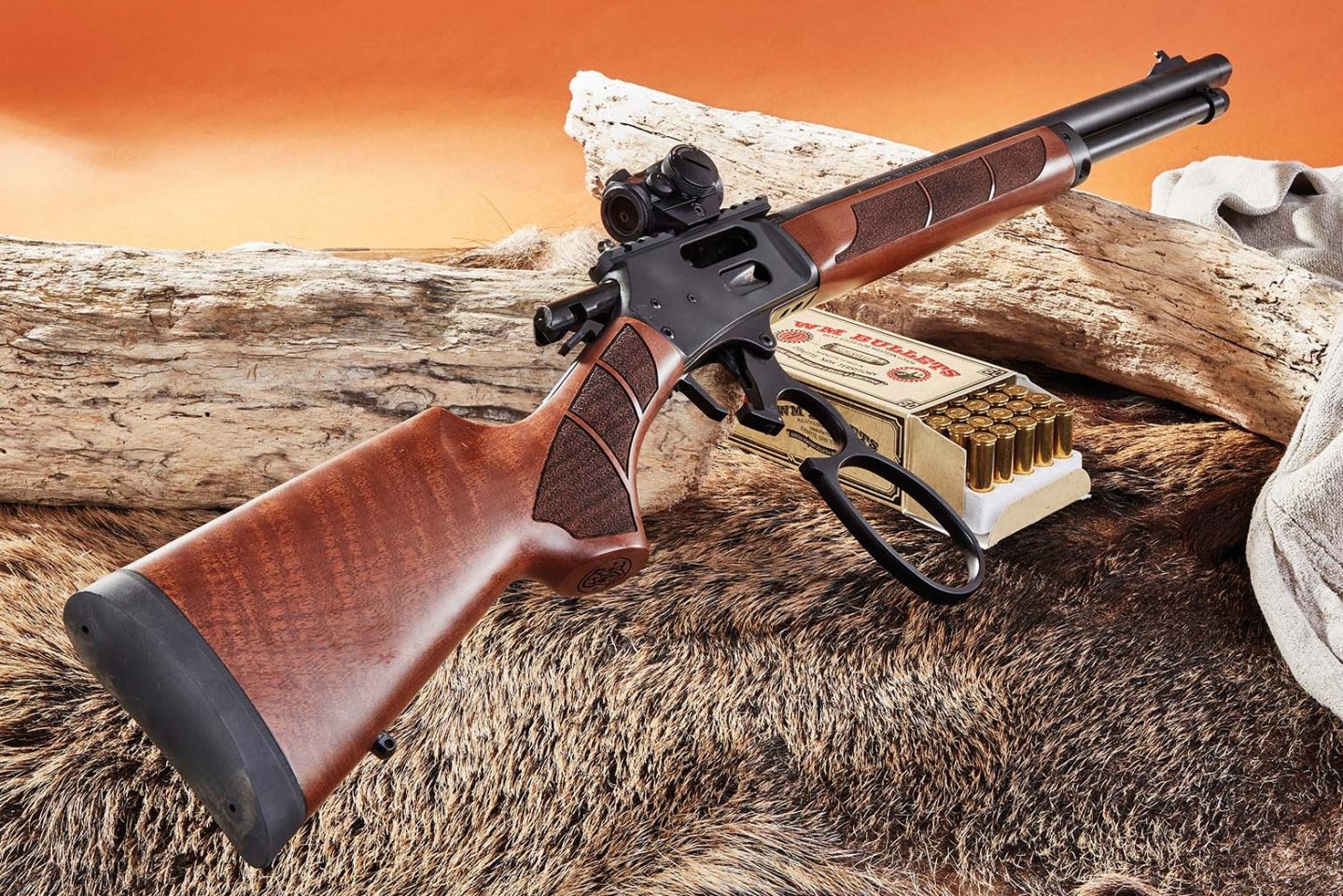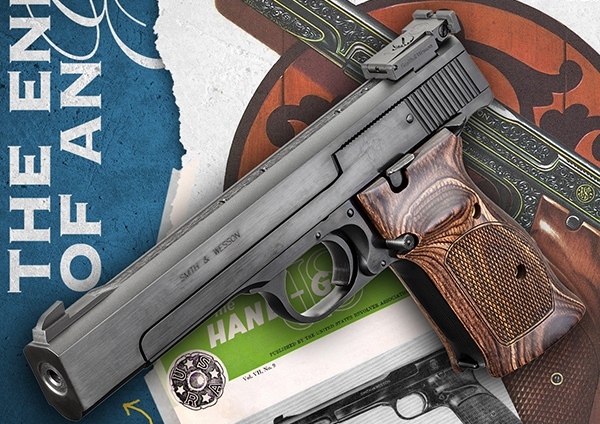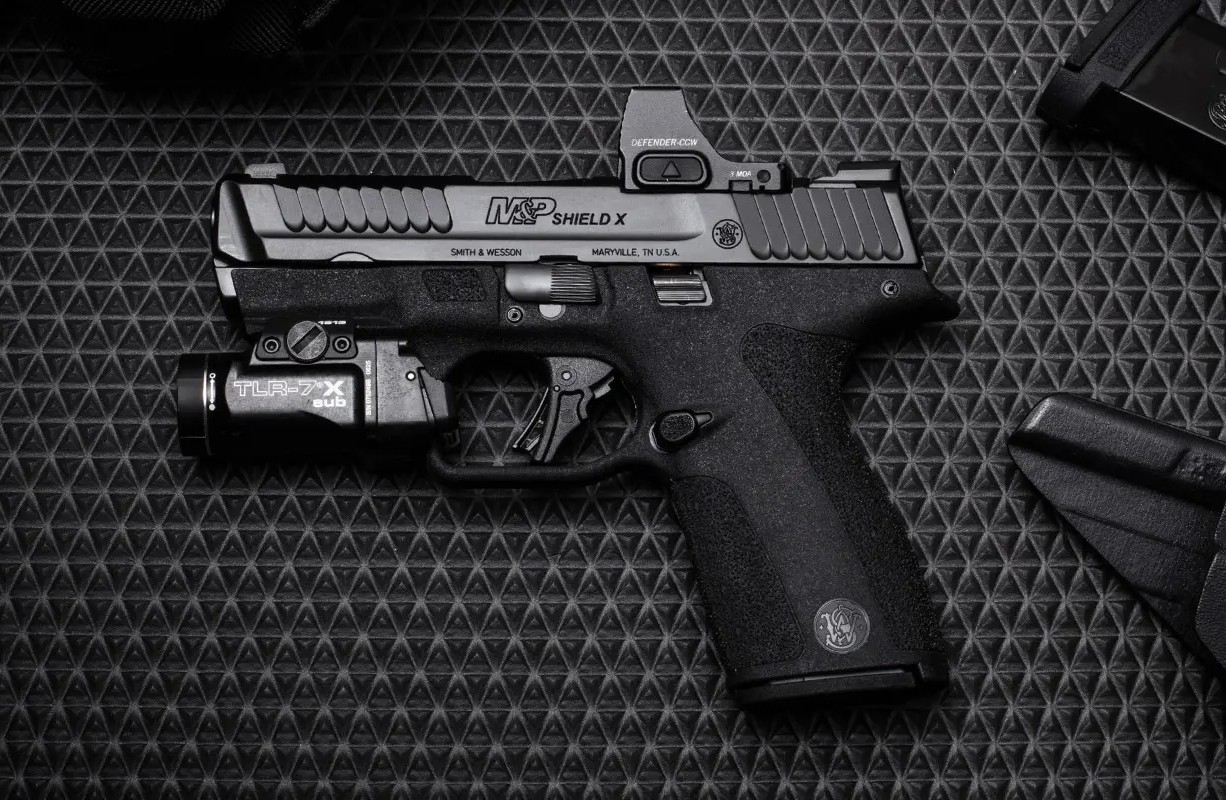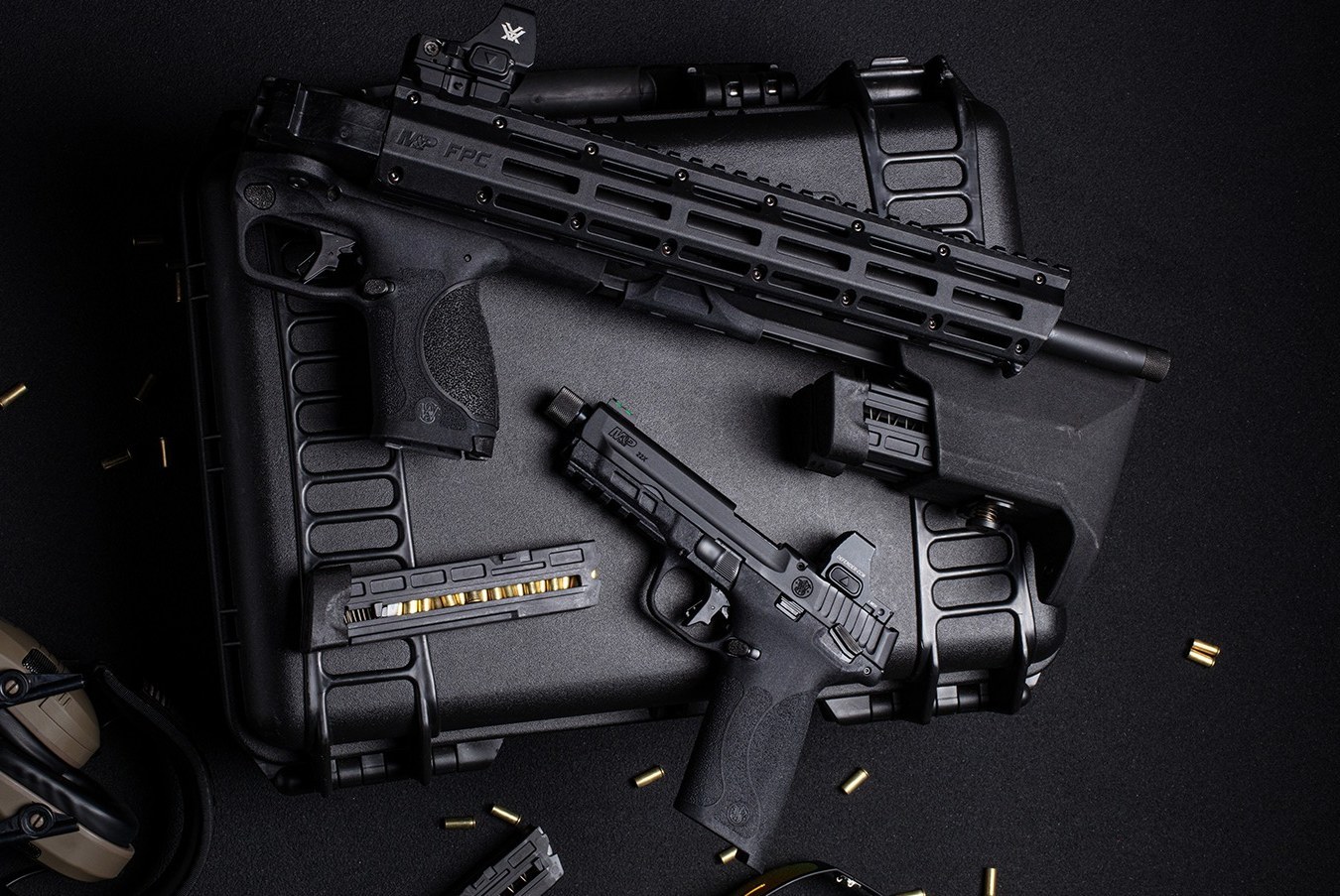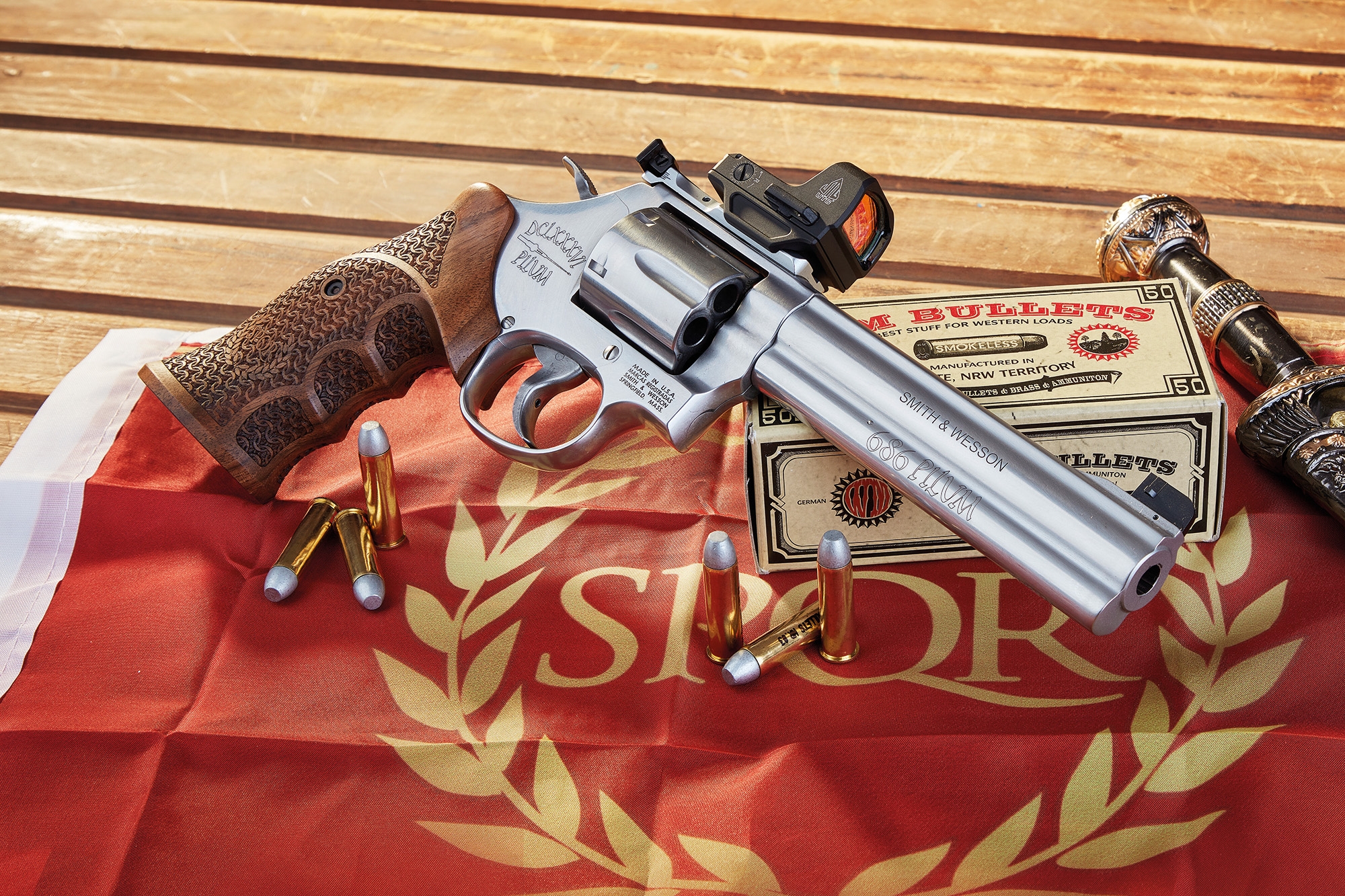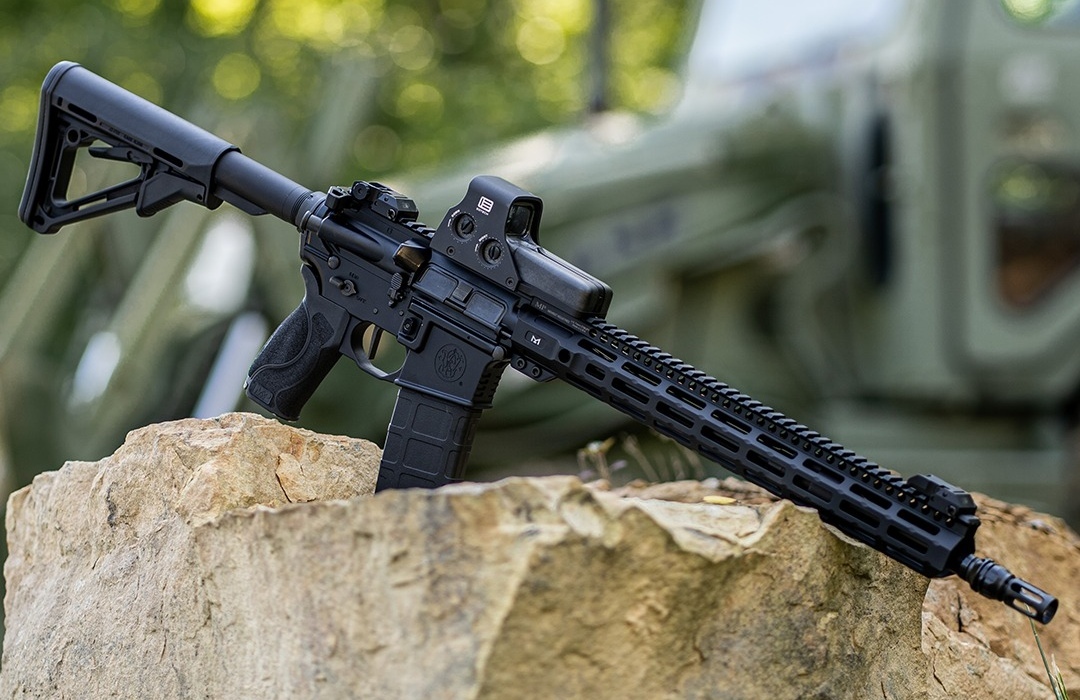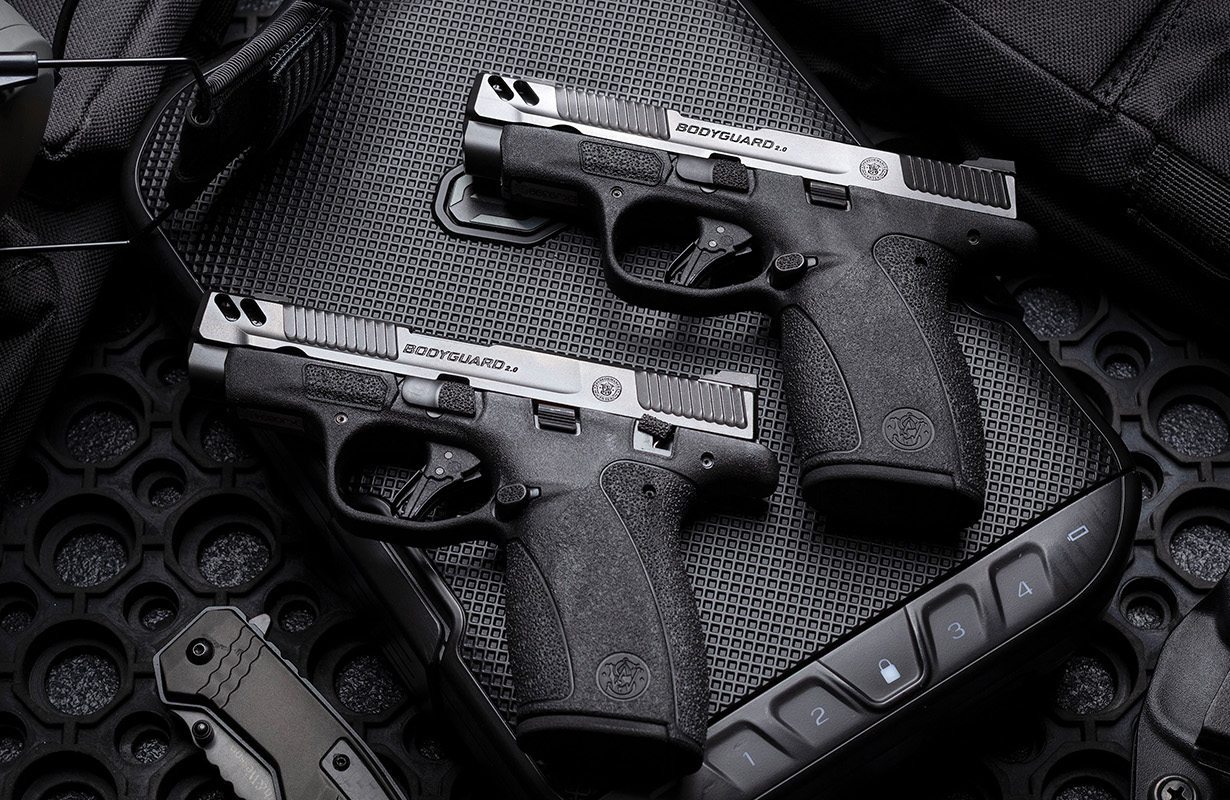The lever-action rifle is booming: today there are "lever guns" in every conceivable design – traditional, hunting, sporting, even with a tactical touch. This explains why the US company Marlin made a swift comeback after the crash of its former parent company at the hands of the new owner Sturm, Ruger & Co. and why new companies such as Anthony Imperato's Henry Repeating Arms and Jim West's Wild West Guns have been able to establish themselves since the 1990s. Smith & Wesson is now another player at the table, so to speak – but it's not a new one, it's an old one. S&W founders Horace Smith and Daniel Baird Wesson were among the pioneers of lever-action firearms: their first company manufactured the early Volcanic-type lever-action pistols in 1854/55, for which the duo received US patent no. 10,535 on 14 February 1854 – making the slogan "Back to the roots" a perfect fit for the new lever-action model from the US manufacturer.
Smith & Wesson Moldel 1854: the different variants

all4shooters.com already introduced the Model 1854. The model name 1854 is reminiscent of S&W's beginnings 17 decades ago. The rifles come in .45 Colt, .357 Magnum/.38 Special and .44 Special/.44 Magnum, each in three versions. They differ in material, finish and barrel length: It started with the Model 1854 in stainless steel (here the tried and tested grade 416) and stock parts made of black synthetic material, the grip surfaces provided with hallmark textures and the front of the fore-end with two M-Lok slots. Like this version, the Model 1854 Traditional Walnut also came with a barrel length of 19.25 inches. However, this version featured a walnut stock and a matte black finish for the stainless steel parts, obtained with the salt bath nitriding process known as Armornite (also known as Melonite). It serves as corrosion protection, hardens the surface and protects against abrasion. The test gun in .44 Magnum belongs to this sub-series of the Model 1854. The anthracite-coloured Stealth Hunter version has a shorter 16.3" barrel, a synthetic stock and an aluminium handguard with 15 M-Lok mounting slots. So that's a total of nine variants so far.

The Smith & Wesson Model 1854 lever-action rifle in detail
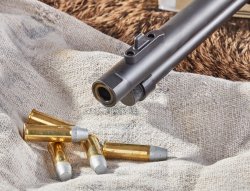
Despite all the differences, S&W's lever guns naturally have things in common, starting with the angled design of the grip sections. It continues with a rubber recoil pad and sling swivel mounts (one at the bottom of the stock, the second at the front on the steel forend end). All versions come with a barrel thread (5/8x24) protected by a cap, have 12-cm long Pica rails (double length on the Stealth Hunter) including a cleverly integrated and adjustable ghost ring sight; there is a screwed-in front sight (Stainless and Traditional with gold-coloured bead, Stealth Hunter with HiViz insert).
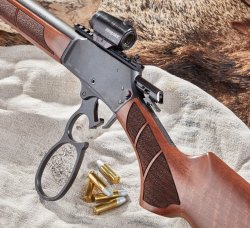
The lever loop is always angled and enlarged to match the pistol grip, so that the gun can be loaded even when wearing thick winter gloves. The straight, longitudinally serrated trigger ensures even pressure and is slightly angled at the bottom to prevent the finger from slipping. All variants have an external hammer with safety catch, all have a cross-bolt safety that works from left to right and has proven its worth with lever-actions. When it is activated, the falling hammer is blocked and cannot reach the firing pin. Incidentally, this is split in two. The rear end is only in line and in contact with the front end when the lever and therefore the bolt are securely locked. Oh, and the case ejection is to the right and not upwards. This all points to the forefathers of the design – the US technicians Lewis Lobdell Hepburn and Thomas Robinson, and thus the Marlin rifles. Hepburn designed a closed-top action with right-hand ejection for Marlin, including the firing pin split in two for safety reasons; Robinson used this to create the simplified Marlin 336 variant introduced in 1948, whose technology also forms the basis of the Model 1854.
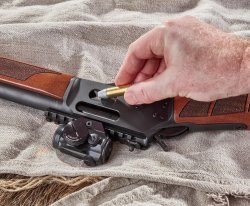
However, the speciality of the S&W 1854 lies in the loading/unloading options. This is explained as follows: there are two standard methods for loading tube magazines. Firstly, through a loading gate on the right-hand side of the receiver into the magazine, and secondly, by placing the rounds directly in the magazine. To do this, the inner tube with the follower housed in it is pulled out of the magazine tube until it lies above the loading opening cut into the outer tube. Insert the cartridges here, push the follower tube back in and secure it, and you're done. The latter loading system remained standard for a long time, especially in rimfire rifles (and pump-action variants) equipped with a tube magazine, while the centerfire variants were usually fed via a side loading gate. The Henry Big Boy from Henry Repeating Arms offers both loading methods. And now the innovation of the Model 1854: here, too, there is the familiar loading gate on the receiver's right side. The highlight, however, is the magazine tube: it locks to the barrel using a bayonet catch under the muzzle on a retaining ring – simply hold the magazine tube by its all-round knurled head cap, turn it counterclockwise and remove the entire tube including the follower and spring. The advantage becomes apparent when unloading: Until now, anyone who wanted to unload their under-lever rifle had to empty it in a cumbersome and not very cartridge-friendly manner. Not here: just unlatch the magazine tube and pull it out to the front, hold the gun at an angle downwards and allow the cartridges to slide gently out of the opening at the front of the fore-end: this innovation gives the Model 1854 its unique selling point.

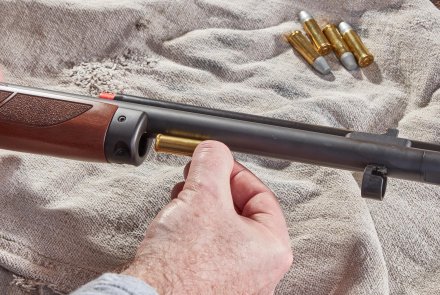
Smith & Wesson Model 1854 tested on the shooting range
The gun was well made, apart from some typically American-looking gaps, especially in the wrist of the stock. The test gun was much more neatly made when it came to the internal and external factory marks, with virtually nothing to be found. It was also very pleasing that the edges on the hammer spur and trigger blade, often found on lever-action rifles, were noticeable but rounded. The rifle fired smoothly and could be easily reloaded by testers between 1.80 and 2.00 meters tall without having to take it off their shoulders. The full forend and the somewhat sturdier pistol grip, which offered a decent grip thanks to lasered-in texture, performed very well. The controls worked flawlessly, even if the cross-bolt safety audibly creaked even when deliberately operated carefully with thumb and index finger and one tester criticised the typical flaw of lever-action rifles, namely that the trigger can be pushed forward when cocked. The trigger characteristics? The trigger pull weight was a robust 2,350 grams, averaged over several test runs using the Lyman Trigger Pull Gauge, and the trigger broke after minimal creep without over-travel – acceptable. The target image was clear, but rather blurry due to the ring. Therefore, the testers mounted an Aimpoint Micro H-1 red dot sight for their accuracy tests.
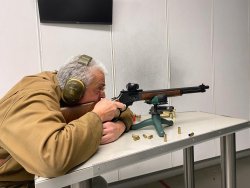
We used five cartridge types in .44 Magnum. The bullet weights ranged between 200 and 300 grains. In addition to partially jacketed 240-grains bullets typical of the calibre, the test also included two lead loads (one flat-head, one semi-wadcutter) and the FTX bullet from Hornady, which is quite light but powerful at 200 grains. This type of bullet has a patented "Flex Tip" design, thanks to which pointed bullets can also be used safely in tube magazines. Whether heavy or light, ammunition could be easily inserted through the loading gate, even if one of the testers rated the gate spring as very hard. Thanks to carefully rounded edges, however, fingers remained intact. The testers used the classic loading trick: only push the cartridge in until it jams in the gate. The following cartridge is then used as a push aid for the rest of the way. In this way, you only have to push the last cartridge through the loading gate with your fingertips; the magazine of this 1854 holds nine cartridges. Once the cartridges were in, it was time for what makes handling such a rifle so appealing: repeating with the underlever. The S&W chambered everything flawlessly, nothing jammed and there were no stovepipes when ejecting. However, the characteristics of the 1854 lever were quite rustic: both the interaction between the bottom of the bolt and the top of the hammer, as well as when locking the lever at the bottom of the action, could have been a little softer – but not more reliable, because there was nothing to criticise.
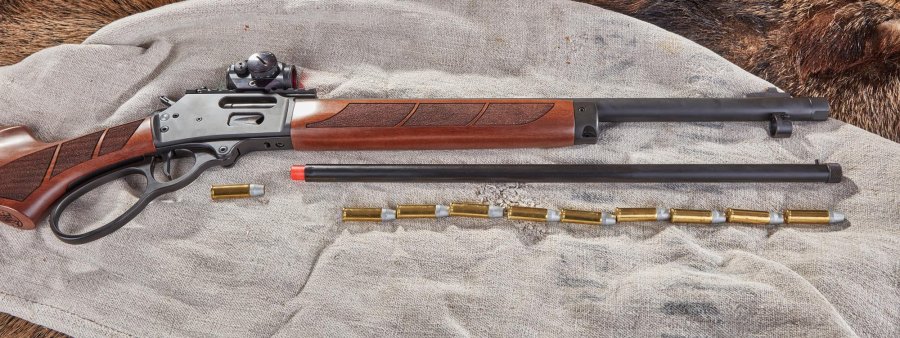
The rifle coped best with the Sellier & Bellot ammo (240-grain Jacket Soft Point), delivering the top grouping of 33 millimetres. Now, the powerful .44 Magnum is nothing to underestimate, even from a rifle-sized lever-action. Thanks to the thick rubber recoil pad the rifle, which weighs a good 3,200 grams, fitted snugly but comfortably on the shoulder. Beyond all measuring and noting, the testers did not miss the opportunity to fire freehand from a standing position and from a fast firing position. Conclusion: the Model 1854 worked flawlessly here too and put a broad grin on everyone's face – handling it was simply fun.
Smith & Wesson 1854 Traditional Walnut technical specifications
| Model: | Smith & Wesson Model 1854 Traditional Walnut |
Calibre: | .44 Magnum |
Capacity: | 9+1 rounds |
Overall Length: | 915 mm |
Barrel Length: | 489 mm (19.25") |
Twist Rate: | 1: 504 mm (1:20") |
Trigger Pull Weight: | 2,350 g |
Weight: | 3,220 g |
Equipment: | Lever-action rifle with tube magazine and external hammer; two-piece walnut stock with textured grip panels and rubber recoil pad, metal parts made of stainless steel with Armornite finish. Screwed-in front sight with gold-coloured bead, windage-adjustable ghost ring rear sight integrated in 12-cm long Picatinny rail. |
Conclusion on the Smith & Wesson Model 1854
The S&W Model 1854 Traditional Walnut proved to be a neatly crafted, reliable, rock-solid interpretation of a classic functional principle with a simple yet clever innovation in the loading/unloading system. Oh, and if you want a different version, S&W has a constantly expanding range to choose from.


